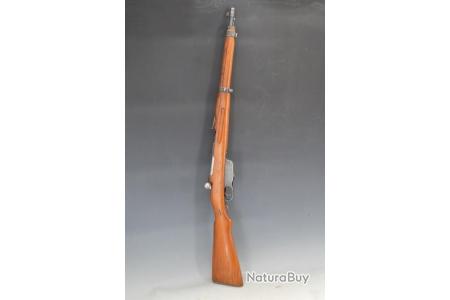
I purchased a huge quantity of surplus ammo at a bargain price many years ago, and have not needed to rely on reloads. It was the Bulgarian M95s that showed up in Mozambique in the 1970s.Īmmo: The Austrian issue 8x56R ball ammo had a velocity of 2034 feet per second.
STEYR MANNLICHER M1895 SERIAL NUMBER
The serial number has been etched into the bolt with an electro-pencil, something unique to Bulgarian refurbished M95s. It appears this rifle was transferred to Bulgaria, very likely under German orders between 19, when Austria was under Nazi Occupation. The sling is correct post-war issue and marked “STOLLA” and “WEIN” (Vienna). Starting in 1930, the Austrians converted their M95s from 8x50R to a more powerful 8x56R and stamped the barrel and receiver with a large “S”, which mine also bears. Mine bears the Steyr factory markings throughout, Austrian Eagle proof mark and 1917 acceptance date. M95s were manufactured in Steyr, Austria and Budapest, Hungary. Actually there was one contingent of the British Empire that did use a nearly identical straight pull design the Canadians armed with the Ross rifle - and the Canadians quickly abandoned the Ross in favor of the SMLE. The trade-off was that the Steyr required more maintenance than the SMLE, and suffered from extraction problems. An Austrian soldier armed with the M95 could fire up to 35 shots per minute. I mentioned in an earlier post that a British soldier could fire an impressive 25 shots per minute with his SMLE. The Austrian troops called this “ruck-zuck” roughly “right now.” The Steyr reduced this to two smooth movements: pull then push. In typical bolt action rifles, the shooter has to lift the bolt handle up and then pull it back then push bolt forward and press it down.

M95 has a then-revolutionary Mannlicher design feature that made it easily the fastest bolt action rifle of WWI – a straight pull action. Afterwards they would continue to pop up in third world hotspots like Mozambique as late as the 1970s. When the Empire was broken up after the war, the ’95 Steyr continued to serve with the Austrians and the Hungarians, as well as the Czechs, Yugoslavs, Bulgarians and others through WWII.

The 1895 Steyr was the standard issue rifle of Germany’s main WWI ally, the Austro-Hungarian Empire.


 0 kommentar(er)
0 kommentar(er)
